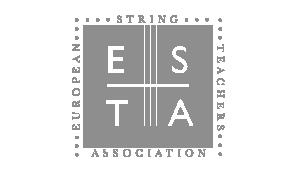In my meditation practice recently, I noticed something subtle but revelatory: Even when I believed I was ‘breathing naturally’, I was controlling my breath in the minutest of ways because I was trying to keep it in time. I realized that, once I felt my breath establish a rhythm, rather than letting the breath enter my body in its own time after the pause at the end of the exhale, I pulled it in when I felt the ‘time’ was right. The same thing went for pushing out the exhale, so out came a crotchet-minim (bar-line) crotchet-minim breathing pattern. I was shocked to discover that, even after a decade of mindfulness practice, I was still policing my breath!
Is this a musician thing, I wondered? Too much time shackled to the metronome? Or a control freak thing? Or a fear thing? Or just a human thing? And how does it affect me as a performer? One thing is for sure, an ongoing practice of meditation challenges it.
This is how I made my discovery:
One of my preferred approaches to being mindful of breath during my sitting practice is, as a lover of the ocean, to imagine myself on a sandy shoreline, watching the wavelets roll in on the inhale and draw back on the exhale. This helps me let go and become an observer of the breath. To support the experience, I open my all my senses. I might hear the slight bubble as the wave breaks at the top of the breath and the hiss of the water as it moves across the sand back to the ocean on the out-breath. I smell the salty air, taste it on my lips and feel the sting of it on my damp skin. As I sit with the movement of the ocean and my breath as one, I soon begin to feel calm and connected to nature, becoming one with the breathing planet. It was during one of these such sittings that I noticed my subtle insistence on rhythm. On observing this, I started to surrender more to my breath, allowing the air to come in and leave exactly when and how it wanted, and was astonished to see how difficult it was to really let it be. Slowly I started to open up to the uniqueness of each breath. Visualizing every one as a wave lapping up over and away from my feet, I saw how they were all slightly different in length. Some in-coming waves barely touched the tips of my toes whilst others traveled as far as my ankles. Occasionally a much longer or deeper breath arose naturally, like a mini-Tsunami. Maybe it was in response to a thought or a feeling. And then the breath returned to normal. Just as the ocean does not hyper or hypo-ventilate, the natural breath (what Donna Farhi calls ‘the essential breath’), however ‘irregular’ it might appear to our minds, regulates itself. It is perfect, innocent and in balance, just as it is.
This observation has got me thinking about the subtlest levels of control we exert when we believe we are playing ‘freely’: The diva who uses the high note as a place to show off her lung capacity is not the same as the singer who lingers naturally at the crest of a phrase. A string player ‘stopping’ the bow and gasping for air in between phrases is not the same as one who allows the body to come to rest and the bow to stillness. Adding a juicy vibrato or taking longer bows or pulling a note out of shape is not the same as the vibrato widening or the bow stroke lengthening or the swelling of time because the body is expanded at the top of a natural inhale in response to the phrasing. So what, I began to ask myself, prevents us from following and even actively fighting the natural shapes of breath, music and movement? One could say - of life itself?
What stops us is fear. Specifically, I believe, fear of the pause at the end of the exhale. This empty non-doing space can feel like a mini-death to us and indeed, in some mindfulness practices, the end of the exhale is used specifically as that - to contemplate the impermanence of all things. However, it is also the fertile place of birth and regeneration and without it we, and the music, are lifeless. So, rather than savour and rest in it, we tend to shorten it, actively pulling the next breath in.
Here is what the Larry Rosenberg, the founder of the Insight Meditation Center in Massachussets, writes in his book Breath by Breath:
“We’re terrified of chaos, afraid that if we don’t keep things in their place they will fall apart. Most of us are quite good at controlling, and what we’d really like is to be better at it. Our tendency is to ride the breath, push it along, help it out, especially when we hear that the breath is part of this marvellous sutra, that it is the life force itself and can lead to enlightenment. All that is like a clarion call to the ego, which begins to tell the breath how to be”……
And here is my version for musicians:
….Our tendency is to push the music along, help it out, especially when we hear that the music we are playing is part of this great tradition, that it is an expression of life and can lead to healing and even a spiritual experience. All that is like a clarion call to the ego, which begins to tell the music how to be.….
It is natural, of course, that the ego is fearful of not being in control. The result of constantly manipulating the music and our movement, however, can be a death sentence to beauty. So what is the alternative?
Larry Rosenberg goes on:
“It is possible to come to a place where you contemplate this breathing body, and there is no question that breathing is happening, but at the same time you can’t find a breather. That can be a wonderful feeling, because the breather is just the ego disguised as a meditator”
…and I think at this point you can imagine how I would translate this for performers. Here it is anyway:
It is possible to come to a place where you contemplate this performing musician, and there is no question that performing is happening, but at the same time you can’t find a performer. That can be a wonderful feeling, because the performer is just the ego disguised as a musician.
For me, the two vital steps to finding the place where we merge with the music are: Recognizing the fear and allowing it to be there, and getting comfortable with the pause despite the fear’s visit. Again, mindful breathing practice offers a key. Donna Farhi says, in The Breathing Book:
The pause..comes as a natural result of learning to relax into the breath and trusting that you don’t need to grasp for that which will come on its own. When you allow the breath to pause you are saying “I am comfortable with who I am” and, just as importantly, you are saying you are able to accept life as it comes to you. A deep, abiding sense of ease, surrender, and relaxation will arise when you allow yourself to drink in the peace of this pause.
In my own personal experience, I no longer seem to suffer from stage fright in performance, thankfully, but as a workshop leader, I can most definitely come face to face with fear. It often arises when I am demonstrating – whatddya know? - how to let go and do nothing. The ego does not like letting go to start with but demonstrating doing ‘nothing’ in front of others when I’m supposed to be teaching them ‘something’ is surely a true affront to it! So, sometimes, the old bow shakes come in as I resist letting go, and I can recognize the controller behind the scenes getting edgy. Luckily, the more I get comfortable with the pause as my home base, the more I can bring compassion to the experience of fear, chuckling inwardly with it. ‘Hello old friend’, I might say to it. ‘You again’. I will talk about it openly with my students when it shows up as an example of how fear is something we all know. It’s not my fear but the fear. And I thank the controller, and she (for mine is most definitely a woman) moves on.
The pause fulfils a double purpose: a resting from the effort of the inhalation and a rallying of the energy needed for the next inhalation. The pause, therefore, is not an idle period when nothing is happening; it is a vital phase in the breathing process…If we interfere with the length of the breathing pause, shortening it even slightly, we find ourselves feeling ‘rushed’ and pressured. Carola Speads. Ways to Better Breathing
The yoga teacher John Stirk recently said in an interview
“The end of the out-breath is where the soul lives”.
In my meditation practice recently, I noticed something subtle but revelatory: Even when I believed I was ‘breathing naturally’, I was controlling my breath in the minutest of ways because I was trying to keep it in time. I realized that, once I felt my breath establish a rhythm, rather than letting the breath enter my body in its own time after the pause at the end of the exhale, I pulled it in when I felt the ‘time’ was right. The same thing went for pushing out the exhale, so out came a crotchet-minim (bar-line) crotchet-minim breathing pattern. I was shocked to discover that, even after a decade of mindfulness practice, I was still policing my breath!





